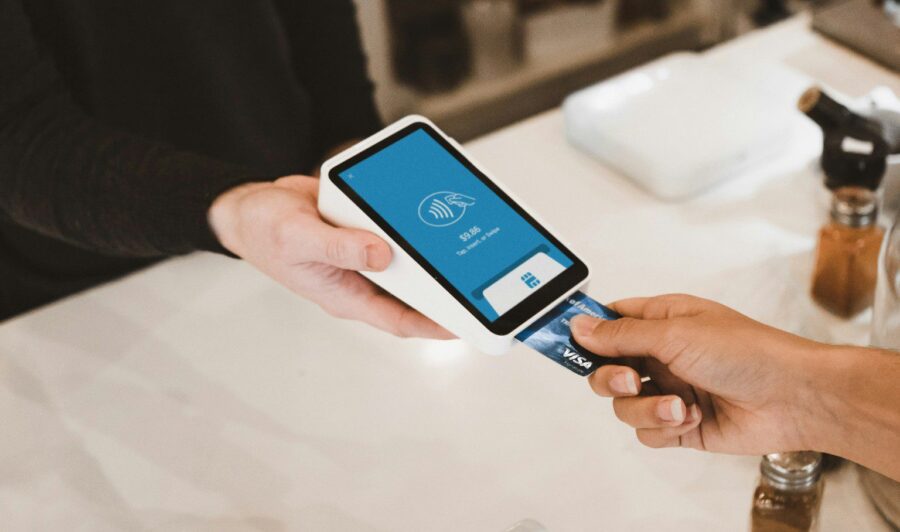
Payment fraud is a significant issue for banks, customers, government agencies and others. However, advanced predictive analytics tools can reduce or eliminate it.
Minimizing false alarms
Many people have had the embarrassing experience of trying to pay for something and having the transaction flagged. It can be understandably frustrating whether this happens at an e-commerce site or when standing in front of a cashier. However, the goal is to reduce those false alarms while stopping unauthorized transactions. Some organizations use predictive analytics to help.
In one case, Synchrony — a financial and payment solutions provider — deployed artificial intelligence and machine learning to make its fraud detection approach more accurate. Executives say it can correctly identify genuine fraud more than 90% of the time, greatly reducing the friction that false alarms cause.
The company’s system continually adapts to the changing landscape. Part of its functionality involves automated decision-making and the detection of abnormal behaviors.
Many financial institution leaders are understandably tight-lipped about the precise functionality of proprietary solutions. Still, they understand how false alarms can cause customers to change their minds about purchases and feel less eager to buy things with methods other than cash.
Identifying patterns consistent with fraud
Just as it’s important for predictive analytics tools not to flag authentic transactions, they must also recognize telltale signs of fraud. For example, a significant deviation in user behavior could indicate a potential account takeover, resulting in an event requiring prompt investigation.
Mastercard uses tools to identify and predict these signs. They stopped more than $35 billion in fraud-related losses over three years. These solutions work by assigning customers a consumer fraud risk score based on their current or past activities.
Representatives also say the technology has helped them understand emerging or persistent fraud types. It’s then easier to warn customers about the newest scams, such as by sending targeted emails, text messages or brochures to educate them about the warning signs.
Some Mastercard employees are also working with other financial companies, leading coordinated fraud-related data-sharing efforts. Then, relevant parties throughout the industry can share knowledge and learn from each other.
Upholding industry benchmarks
People’s banking transaction methods have evolved. For example, 31% of adults made payments with voice-activated applications in 2022. These new methods mean financial professionals need new and diverse ways to spot payment fraud. Predictive analytics tools can indicate whether brands perform well enough in these efforts.
Visa offers a solution used by thousands of financial institutions as a fraud preventive. It enables those parties to work with merchants, applying analytics to authorize payments and deal with disputes. The tool also reflects industry benchmarks, showing whether participants get results within the average for particular case types.
One entity using Visa’s tool experienced a 30% reduction in fraud, along with a 10% boost in transaction approvals. That breakdown shows how well-applied predictive analytics tools and other technologies can result in better outcomes for everyone involved.
Additionally, when a merchant knows particular metrics are significantly higher or lower than industry benchmarks, they can recognize what’s going well so far and know where room for improvement exists.
Increasing customer protections
Anyone who has experienced the aftermath of a successful payment fraud attempt knows how quickly things can go wrong. A criminal could drain someone’s bank account in minutes. However, predictive analytics tools reduce the chances of such instances, keeping customers safer.
These solutions rely on vast amounts of data, comparing what’s presently happening with someone’s account with historical information about it. Any evidence of a substantial deviation could result in the account getting instantly frozen until a human investigates the matter.
Sometimes, people get automated prompts that ask whether they made certain unusual transactions. When those queries come via text messages or email, people can respond in seconds, unlocking their accounts and the associated cards without ever needing to speak to representatives.
However, once an account features genuinely unauthorized transactions, the speed with which predictive analytics products can make it inoperable is a fantastic protective measure. Fraudsters operate quickly, so thwarting their attempts as soon as possible becomes essential.
Predictive analytics products also operate when account holders cannot take action themselves. For example, if someone tries to commit fraud while the account user is sleeping, they probably won’t respond to text messages and emails in time. In such cases, the analytics tool can determine that the safest response is to lock the affected party’s account until further investigations can occur.
Payment fraud prevention requires proactiveness
Payment fraud can become a massive issue for everyone affected. Speed is essential when addressing and curbing it. Fortunately, predictive analytics can process data faster than humans, allowing automation to provide additional screening and protective measures that stop fraudsters’ actions and keep everyone safer.
However, any financial institution decision-makers considering using it should choose their solutions carefully and understand both the pros and cons of individual products. Although no commercial option is wholly without downsides, leaders often determine that predictive analytics-based products are essential parts of operating effectively in a world where fraud is increasingly rampant and frequently damaging.
